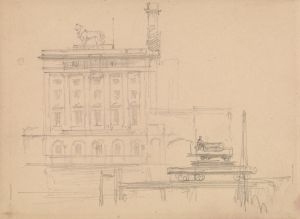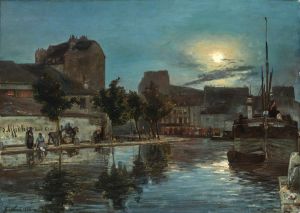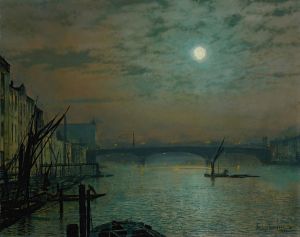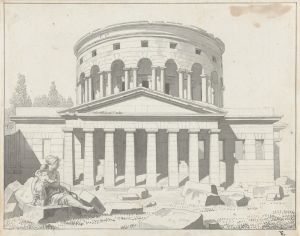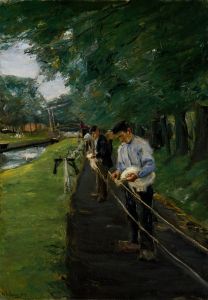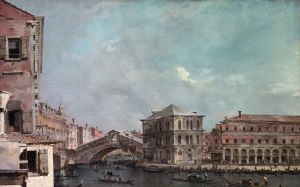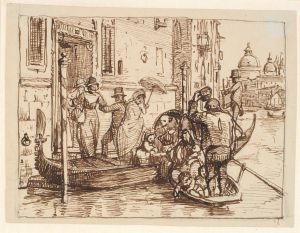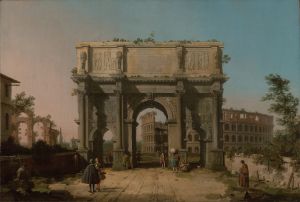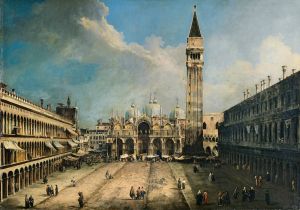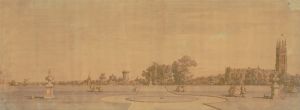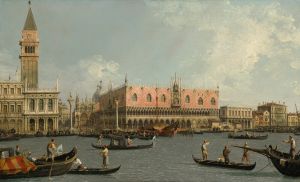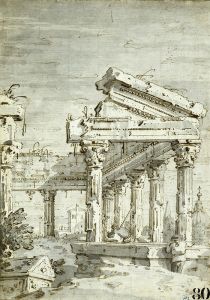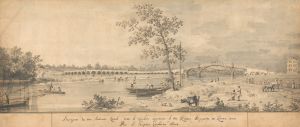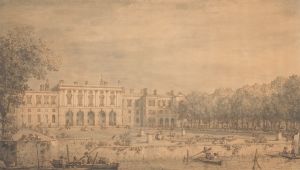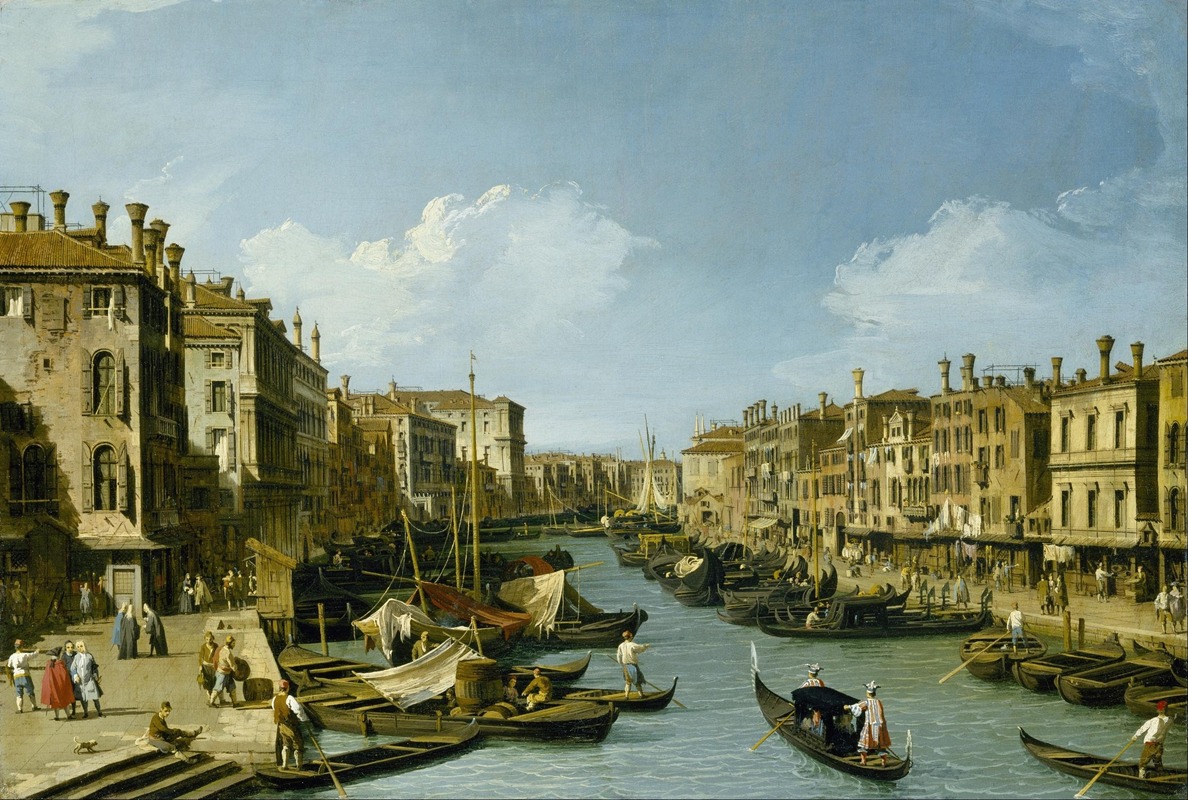
The Grand Canal near the Rialto Bridge, Venice
A hand-painted replica of Canaletto’s masterpiece The Grand Canal near the Rialto Bridge, Venice, meticulously crafted by professional artists to capture the true essence of the original. Each piece is created with museum-quality canvas and rare mineral pigments, carefully painted by experienced artists with delicate brushstrokes and rich, layered colors to perfectly recreate the texture of the original artwork. Unlike machine-printed reproductions, this hand-painted version brings the painting to life, infused with the artist’s emotions and skill in every stroke. Whether for personal collection or home decoration, it instantly elevates the artistic atmosphere of any space.
"The Grand Canal near the Rialto Bridge, Venice" is a painting by the renowned Italian artist Giovanni Antonio Canal, better known as Canaletto. This artwork is a quintessential example of Canaletto's mastery in capturing the vibrant and bustling life of 18th-century Venice through his detailed and atmospheric vedute, or cityscapes.
Canaletto was born in Venice in 1697 and became one of the most celebrated painters of his time, particularly known for his precise and luminous depictions of Venice. His works are characterized by their meticulous attention to architectural detail and the play of light and shadow, which bring the scenes to life. Canaletto's paintings were highly sought after by collectors, especially British aristocrats undertaking the Grand Tour, who were eager to bring back souvenirs of their travels.
"The Grand Canal near the Rialto Bridge, Venice" showcases one of the most iconic views of the city. The Grand Canal is the main waterway that snakes through Venice, and the Rialto Bridge is one of its most famous landmarks. This stone-arch bridge, completed in 1591, was the only way to cross the Grand Canal on foot for centuries and remains a symbol of Venice's architectural ingenuity.
In this painting, Canaletto captures the dynamic atmosphere of the Grand Canal with remarkable precision. The composition is filled with gondolas and other boats, reflecting the canal's role as the primary thoroughfare for transportation and commerce in Venice. The bustling activity on the water is mirrored by the lively scene on the banks, where figures engage in various daily activities, adding a human element to the architectural grandeur.
Canaletto's use of perspective is particularly noteworthy in this painting. He employs a vanishing point that draws the viewer's eye along the canal, creating a sense of depth and inviting the viewer to explore the scene. The artist's skillful handling of light enhances the realism of the painting, with sunlight illuminating the facades of the buildings and casting reflections on the water's surface.
The painting is also a testament to Canaletto's ability to balance accuracy with artistic interpretation. While he was known for his precise renderings of Venetian architecture, Canaletto often made subtle adjustments to enhance the composition or to emphasize certain elements of the scene. This blend of realism and artistic license is a hallmark of his work and contributes to the enduring appeal of his paintings.
"The Grand Canal near the Rialto Bridge, Venice" is housed in various collections, with versions and similar works found in museums and galleries around the world. Canaletto's paintings continue to be celebrated for their historical significance and their ability to transport viewers to the enchanting world of 18th-century Venice.
In summary, Canaletto's "The Grand Canal near the Rialto Bridge, Venice" is a masterful depiction of one of the city's most iconic views. Through his meticulous attention to detail and skillful use of light and perspective, Canaletto captures the essence of Venice, offering a glimpse into the vibrant life and architectural splendor of this unique city.





